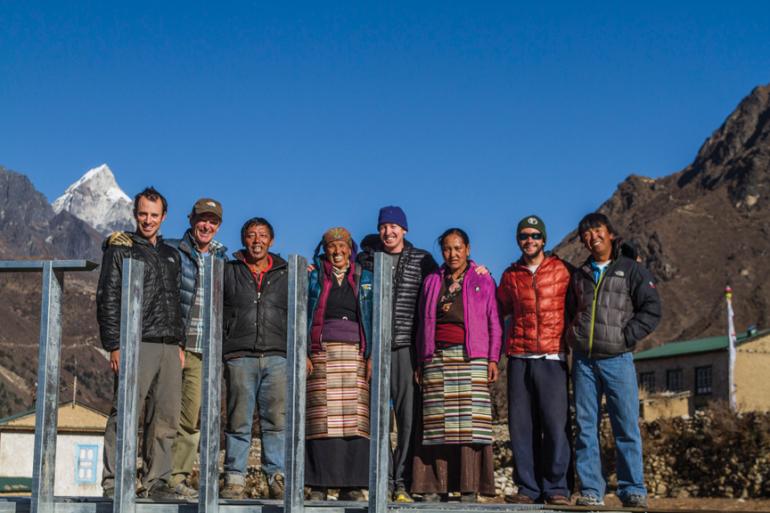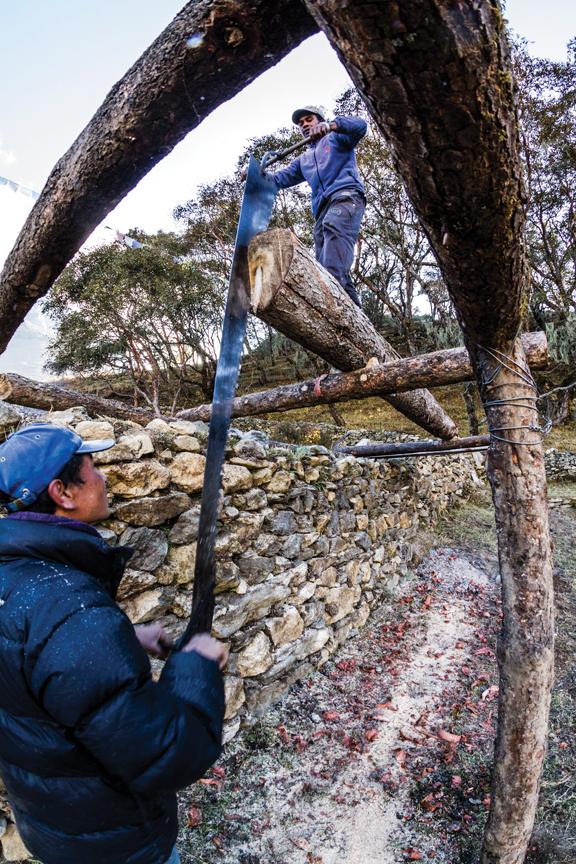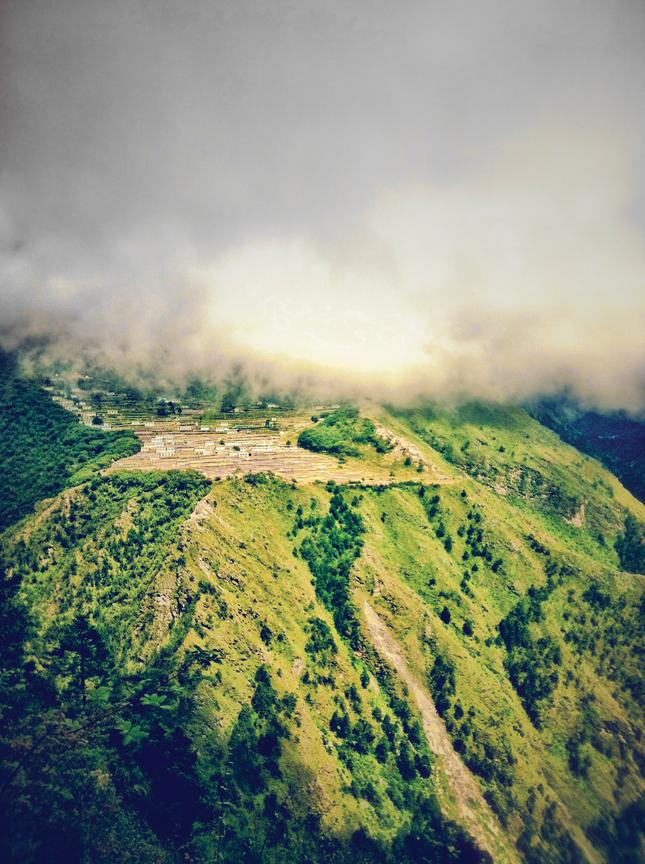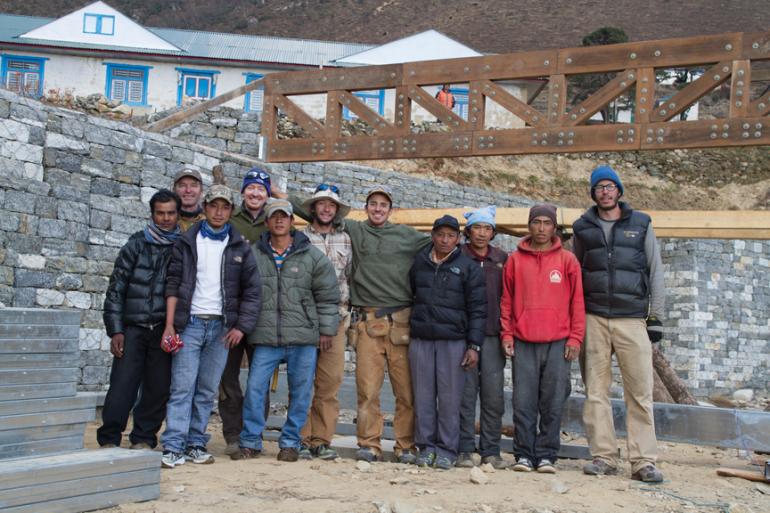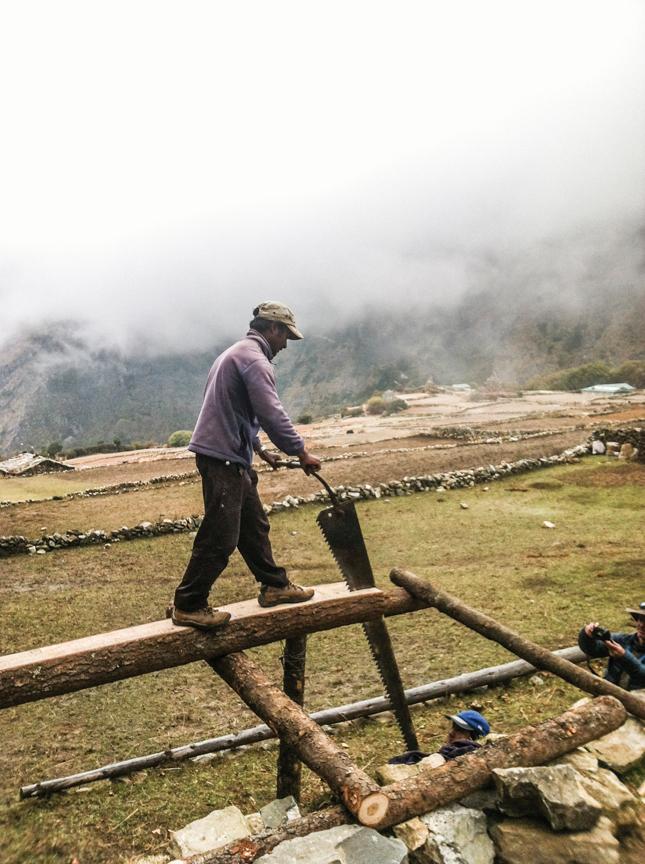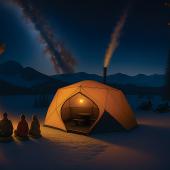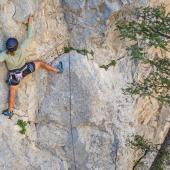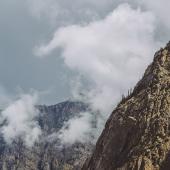Cross-Cultural Construction
Alex Lowe grew up with a deep and pure love for the mountains, instilled in him as a child by his parents who took him and his two brothers out into the wilderness of Montana. He felt at home among the unmarred peaks and boundless serenity of the most remote pitches the world had to offer. It was this connection that led Lowe to the Himalayas, one of the most raw and unbound alpine environments in the world. It was in the Himalayas where, in part, he earned his distinction as a world-renowned alpinist, and where he gained a love for the warm and resilient Sherpa people. It was also in the Himalayas that in 1999, on the face of a remote peak in Tibet called Shishapangma, Lowe lost his life in a tragic avalanche.
In 2003, in memory of Lowe and in honor of his spirit, his wife Jennifer Lowe and his best friend Conrad Anker started the Alex Lowe Charitable Foundation. The basis of this organization was to develop and support community-based aid programs among mountain people in remote areas across the world. The main branch of the organization quickly became the Khumbu Climbing Center (KCC), a program developed to teach safe climbing practice and skill among the high-altitude Sherpas of the Nepal Himalayas. Lowe loved the time he spent in the Himalayas, not only because of the high peaks, but also because of the Sherpa people with whom he spent much of his time. The Sherpa have been venturing into the mountains of the Himalayas since westerners began their forays to conquer the high peaks, many of whom perished from lack of knowledge and technical skill. The KCC began teaching the skills that might prevent further Sherpa deaths with the addition of technical and safety skills not previously prevalent among Sherpa climbers.
Now in its 10th year, the KCC has educated over 700 climbing Sherpas, many of whom work with expeditions and treks in the Himalayas. As the skill level among the climbing Sherpas of the Khumbu increases, expeditions have become more surefooted, and the overall safety margin of trips to the “Roof of the World” has greatly increased.
As the growth and influence of the KCC increased in the Nepal Himalayas, the need for a permanent facility rose. In 2006, the Montana State University Department of Architecture began work on a design for an environmentally sustainable building that was more sound and culturally viable for the town of Phortse, where the school is located. Mike Everts, a senior professor of architecture at MSU, headed the project, and with five students who had worked on the design for the building, visited the location and began preliminary work on the building site. One of these students was Dean Soderberg, an MSU student from Laramie, Wyoming, with a love for the mountains and adventure. Two years later, as the need for a live-in western supervisor became clear, Soderberg found himself living in the village of Phortse and acting as manager on the construction project.
“It was an overwhelming idea at first,” Soderberg says, “but since I had been there to Phortse before and had befriended many of the village people, moving in for an extended period of time just seemed like becoming part of the family.”
Soderberg has been working on the school building for the past four years, with the majority of that time spent in Nepal. From ordering and purchasing building materials to organizing stone masons and carpenters, Soderberg has captained the project and made sure the design of the building has remained true to the design first put forth by the MSU project.
“It was interesting having to figure out how to communicate and organize with all the different parties you have to deal with in such a foreign environment,” Soderberg says. “The cultural norms and ways simple things happen, like getting materials shipped to the construction site, differ entirely from what I knew. For instance, almost all our materials had to be carried in on porters’ backs, gathered from local forests, or flown in by helicopter.”
When completed, the building will be a solar-heated, earthquake-resistant structure built with the ideologies and aesthetics of original Sherpa culture. It will provide not only a meeting area for the KCC and stronghold of safe climbing gear and knowledge for years to come, but will also be a gathering point for cultural events, a great place for visitors to look into the mountain culture of the Sherpa people, and a shared space belonging to all in the Khumbu.
“It will be thoroughly appreciated,” Soderberg says. “Outside of the KCC using it for courses, the community will love it for daily use, celebrations, and blessings. The Sherpa are a very communal people and this building will provide a point of pride for the town of Phortse and the climbing Sherpa.”
When asked if, after years of living among the people of the Khumbu, he has gone native, Sodergerg laughs. “I definitely relate more with my local friends than any of the tourists that come through. This is such a remote place and nothing is taken for granted by the Sherpa people here. When westerners come complaining of petty hardships and the lack of modern amenities, I laugh to myself.” Soderberg has connected with the Khumbu over his time there, and when he has a family he means to bring them back to meet his Sherpa family.
Soderberg will return again this spring to press on with work on the building project, and will see it through its completion over the next several years. The Alex Lowe Charitable Foundation will continue to fundraise in order to complete the building project, and will help complete the building to move on to similar projects in years to come.
If you would like to learn more about the Alex Lowe Charitable Foundation or would like to make a donation to help complete the construction of the KCC building, go to alexlowe.org.
Photos by Dean Soderberg


